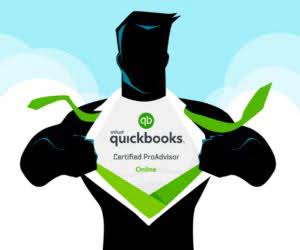Access to client data is protected by two-factor authentication and restricted based on roles designed for segregation of duties and need-to-know access control principles. Data security is of paramount importance to your team—and to ours. As keepers of our clients’ most sensitive data, we know your trust is imperative. You’ll also want to make sure all of your employee information is secure so it can’t be accessed by employees or outsiders. The last thing you want is to allow secure employee information, such as salary amounts, into the hands of employees who then get frustrated with what they see.
The term is also sometimes used to refer to payroll outsourcing services. While there are many payroll services and software options on the market, we’ve extensively studied many of the market leaders and isolated our favorites. It can be hard to define the difference between payroll software and services, but we’re defining a payroll service as a third party that handles the entire payroll process for you. Many payroll software providers perform services as part of their software offering, such as processing tax payments for you. For some small businesses, outsourcing the whole process to a specialist may be the easiest way to do payroll.
- The first thing to consider when choosing a payroll system is what you need for your business.
- Many companies will require you to contact them for a quote, as they will tailor their services for your unique needs.
- Absolutely, we’d be happy to provide you with a demo of our managed payroll product.
- With Namely, take tax compliance stress off your plate completely.
- Whether you provide training through your human resources department or you have a third party train your team, it’s crucial that there is a training process.
Payroll refers to the process or system used to calculate and pay the salaries of all employees. It is also a good idea to discuss payroll as part of onboarding new employees, so they know what to expect and who they can talk to if they have questions. It’s important that everyone involved in the payroll process is trained properly. Whether you provide training through your human resources department or you have a third party train your team, it’s crucial that there is a training process.
Select the accounting product your client uses below to reveal compatible payroll options. Learn how to get set up, pay your team, find HRsupport and benefits, and sync with accounting soyou can manage everything in one place. Because each state is different, finding accurate payroll tax law information can be difficult and confusing. This map makes it easy to find up-to-date tax laws that apply to your state, plus links and contact info for appropriate agencies.
With all of the time, energy and potential liability involved in payroll, this is well worth the price. Payroll management encompasses the entire process of calculating employee hours, paying employees, withholding taxes and maintaining the financial documentation for your business. You may quickbooks payroll optionally allow wholesale clients to access their accounts using the website For these clients, the Intuit Online Payroll name has been substantially removed. Notice that your firm’s name will be prominently displayed along the top, while the Intuit Online Payroll name is not present.
Have you come across a payroll term you’d like to learn more about? This tool lets you search and find answers quickly, and in many cases provides links you can use to dig deeper into the subject. Turn your data into business results with robust HR analytics tools. Attract and retain your people with recruiting, performance management, goals, and recognition. An intuitive system of record with onboarding, self-service, eSignature, and more. Find help articles, video tutorials, and connect with other businesses in our online community.
This guide is intended to be used as a starting point in analyzing an employer’s payroll obligations and is not a comprehensive resource of requirements. It offers practical information concerning the subject matter and is provided with the understanding that ADP is not rendering legal or tax advice or other professional services. Keeping track of gross pay vs. net pay, making sure each is accurate and then paying all of the taxes to the appropriate government entity is at least a full-time job all by itself. The cost of paying an employee to process this may wind up being more expensive than using another option. Whether your clients run payroll themselves or need help from the pros, find efficient solutions to help get the job done accurately.
The Wholesale Client Experience
Outsourcing means that most things will be taken care of by professional payroll managers. Absolutely, we’d be happy to provide you with a demo of our managed payroll product. A live demonstration will allow you to explore the features, functionality, and user interface of our platform. To schedule a demo, simply reach out to us, and we’ll arrange a convenient time for you to experience our Managed Payroll solution firsthand. That means, in addition to automated payroll, you’ll receive full-service features. Payroll software can be extremely affordable, costing $40 per month plus $10 or less per employee.
If you have employees who are paid on an hourly basis, then you’ll likely want to use an automated time tracking system. Having employees fill out time cards manually isn’t reliable and could cost you money from time theft. You can increase efficiency and speed up the payroll process by using the right tools to track your employees’ time. The right payroll software or service for you depends on a number of factors from how much you have to spend to how many employees you have and which states you operate in.
Small business owners can pay and manage their teams with integrated payroll, and access HR, health benefits, and more. Our payroll software also includes same-day direct deposit and automatic tax filing, which is backed by tax penalty protection. A payroll management system is software technology designed to make running payroll easier for businesses. It automates many of the most labor-intensive processes, such as calculations, deductions and payments, and in some cases, includes tax reporting services and compliance support. Many providers today offer payroll management as a standalone product or as part of a larger suite of integrated HR capabilities. Pay management generally means the process by which businesses pay their employees and file payroll taxes with government agencies.
Finally, you will need to calculate and submit your federal and state taxes for all employees on the payroll, usually on a monthly basis. You will also need to make social security and Medicare payments. It is very important you pay these deductions on time or fines/penalties may be levied on the business, which can be steep. If you are not https://quickbooks-payroll.org/ outsourcing your payroll but doing it in-house, then it may be a good idea to consult with a CPA or tax law attorney to ensure you are deducting the correct amount. There are a number of different ways you can make payroll payments to employees. First, schedule a call to learn more about our payroll platform and Managed Payroll services.
Audit Your Payroll Process
Every business, large and small, that employs people has one thing in common – they all must manage payroll in some way. Due to the complexity and importance of the task, many employers choose to work with a payroll provider to help ensure that it’s done right. The term “managed payroll” actually refers to a type of business process outsourcing, wherein a third-party provider handles all payroll administration on behalf of the business. To pay your employees, you will need to gather the relevant information. This will include their basic data such as name, address, and social security number, all of which you should have on file in their employment record. You will also need them to complete a W-4 tax withholding form to document their filing status and monitor personal allowances.
Things to consider when managing payroll
When you have more than a few employees, the payroll process becomes very difficult to manage on your own. We recommend using payroll software if you are processing payroll for anyone other than yourself. The entire process involves collecting employee data and inputting it correctly into a file or document. You’ll have to calculate each paycheck for every pay period, making sure taxes are calculated correctly. The last step is making sure both your employees and the appropriate government agencies are paid on time correctly.
Payroll management is one of the most important administrative functions of your entire organization. If done correctly, it will largely go unnoticed, but if done incorrectly, it can make it impossible to stay in business. We’ll set up your payroll for you with QuickBooks Payroll Elite. With QuickBooks Payroll Premium, we’ll review your setup to make sure everything is correct. QuickBooks Online Payroll works for small to midsize businesses—from accountants and financial experts to hospitality companies, construction companies, and truckers.
Personalization and scalability are at the core of our services and platform. You can manage payroll manually on your own or with the help of payroll software or a third-party payroll service. The primary drawback of this method of managing payroll is the cost, as it’s the most expensive option. Many businesses appreciate the touchpoint with their employees of managing the process and making sure they are the ones that deal with any issues that come up.
Run payroll in less than 5 minutes with QuickBooks Payroll1
This eight-step guide on how to set up payroll for small business tells you everything you need to know, broken down into convenient and manageable steps. Implement our all-in-one modern HR technology coupled with our enhanced payroll service. Don’t ever waste time again importing employee hours, entering payroll adjustments, verifying wages/employment, or managing system configurations. We understand the burden and stress of paying your people accurately and on time. Namely’s Managed Payroll is a proven service designed to reduce your workload, keep you compliant, and give you much-needed hours back in your day.
More time to do what pays
You must be sure Social Security numbers, bank accounts, and other secure data cannot be accessed, stolen or misused. Set payroll to a schedule, so your team gets paid on time, every time. Your own firm’s name will be prominently displayed along the top alongside the Intuit Online Payroll name. Email communication that retail clients receive will come from Intuit Online Payroll.

